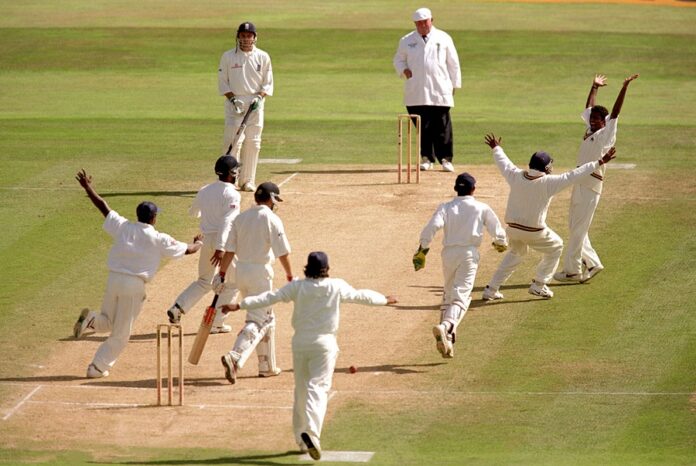Strangely, successive Sri Lankan teams have done pretty well in alien English conditions but over the years they have been well below par in India.
Why we are yet to win a Test match in India remains a huge question whereas the Sri Lankan teams have done so well in neighbouring Pakistan, beyond expectations in fact, although Pakistan is a place visiting teams generally struggle. There have been quite a few memorable tours of England and the one that stands out is the glorious summer of 1998 where Arjuna Ranatunga’s side recorded their first ever Test win on English soil and won the tri-nation Emirates Cup as well.
Unlike the present day, where a cramped up schedule gives you very little time to acclimatized to the conditions, two decades ago, the team arrived in England some seven weeks before the Test match. In that period, they played five First Class games (all four day matches) and five one-day games with English counties.
Your success in England depends so much on the conditions. The Sri Lankans had firsthand experience of that in Cardiff where Glamorgan shot them out for 54 runs on a damp wicket. But as the tour progressed, the visitors got a hang of conditions, having drawn against Somerset and Middlesex and won the other seven games. Now that was pretty good preparation ahead of the ODI series and one off Test. Most of the batters were in pretty good nick. Poor Russell Arnold, who scored a double hundred against Somerset, had to sit out of the Test match.
Skipper Arjuna Ranatunga was unhappy for a number of reasons. Firstly, his side, the World Champions in limited overs cricket had been granted only a one off Test yet again, whereas Zimbabwe were going to tour England two summers later for multiple Tests. Arjuna was also unhappy that The Oval was going to stage the Test and not Lord’s, the Home of Cricket.
Manager Ranjit Fernando would urge his boys to look at the positive side. The Oval, after all, had staged England’s first ever Test match and not Lord’s. The shift meanwhile was reasonable too as Lord’s was under construction for the ICC Cricket World Cup the following summer. Also it was destiny that the game was played at The Oval as it is the track that suits spin bowlers most in England and Murali was unstoppable.
Arjuna’s decision to bowl first was frowned upon as England piled up 445 runs in the first innings having batted for two days. Sri Lanka’s plans were risky but as they say, fortune favours the brave. They were keen on piling up the runs quickly with Sanath Jayasuriya throwing caution to the wind. Now Jayasuriya’s form had been patchy leading up to the game. Into the bargain, in a warm-up game against Kent, he has been hit on the hand four times on a dodgy wicket.
Jayasuriya had decided that attack was the best form of defence and runs started flowing. Soon, England were on the back foot. Aravinda de Silva, the team’s most experienced batter in England, made a fine 152 as Sri Lanka piled up nearly 600 runs. Jayasuriya’s double hundred is the only one, to date, by a Sri Lankan in England.
With a lead of 146 runs, Sri Lanka could put pressure back on England, but day four ended with England well placed on 54 for two, just 92 runs behind with eight wickets in hand.
The final day saw a remarkable turnaround as England cracked on a crumbling wicket where Muttiah Muralitharan was unstoppable. He took nine wickets in the second innings and the other – captain Alec Stewart – was run out by a direct hit from Upul Chandana, who had come in as a substitute fielder for Aravinda de Silva.
Left with a target of 36 runs, Sanath Jayasuriya cutting Ben Hollioake over point for six while still airborne remains one of the iconic images of the sport. In the main pavilion of The Oval, the image is framed alongside some of the other historical moments of the game at the London ground.
During his nine-wicket burst, Murali completed 200 Test wickets. He finished with 16 for 220, the best figures by a Sri Lankan and the fifth best analysis in the history of the game.
England coach David Lloyd questioned Murali’s bowling action after the game but it backfired with British media hammering the coach. Britain’s leading cricket writer at the time Christopher Martin-Jenkins termed it ‘sour grapes’.
Arjuna didn’t mince any words at the post match media briefing saying that his team was denied a three match Test series as England feared losing 3-0. His words were clearly heard by the bosses of English cricket at Lord’s who announced back to back three match series involving Sri Lanka home and away in 2001 and 2002. Arjuna, sadly, had retired by then.
Prior to the Test win, Sri Lanka also won a tri-nation competition involving the hosts and South Africa. Dubai based Emirates airlines were expanding to Europe and they thought cricket was the best means to sell their product. They named the tournament Emirates Cup.
Sri Lanka had a point to prove against South Africa. There had a been a few press interviews by South African players that Sri Lanka were lucky not to meet the Proteas during the 1996 World Cup which they had won. So Arjuna’s men had an axe to grind with Hansie Cronje’s team and they put the record straight with a comprehensive 57 run win at Trent Bridge.
England qualified for the finals and were once again were troubled by Murali, who claimed a five wicket haul. The 257 run chase was spearheaded not by the usual suspects Sanath Jayasuriya or Aravinda de Silva. Marvan Atapattu played the anchor role producing a classy 132 not out to take Sri Lanka over the line.
It was a glorious English summer for Sri Lankan cricket where they won ten of their 13 games on tour. The current team hopefully will gain inspiration from the exploits of their predecessors.














